Podcast: Play in new window | Download
Subscribe: Apple Podcasts | RSS
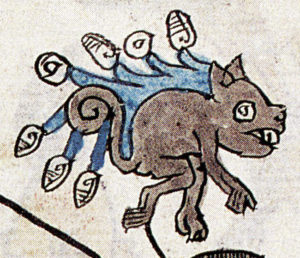 Mexico has its own version of Bigfoot called the sisimite. Some people claim that Mexico had its own type of Roswell incident when a flying saucer crashed outside the northern Mexican town of Coyame. There exists an area in Mexico’s Chihuahua Desert full of strange magnetic anomalies, disappearances and unexplained objects. People liken this to the Bermuda Triangle. It’s only logical to ask the question, does Mexico have the equivalent of the Loch Ness Monster? Bad Scottish weather aside, the answer is a complicated “yes,” or perhaps just a “maybe.”
Mexico has its own version of Bigfoot called the sisimite. Some people claim that Mexico had its own type of Roswell incident when a flying saucer crashed outside the northern Mexican town of Coyame. There exists an area in Mexico’s Chihuahua Desert full of strange magnetic anomalies, disappearances and unexplained objects. People liken this to the Bermuda Triangle. It’s only logical to ask the question, does Mexico have the equivalent of the Loch Ness Monster? Bad Scottish weather aside, the answer is a complicated “yes,” or perhaps just a “maybe.”
When the Spanish arrived in the New World they were met with unfamiliar peoples, new landscapes and strange plants and creatures. In the lakes surrounding the Aztec capital of Tenochtitlán, there was said to lurk a strange creature, one that would attack people and capsize fishing boats. The creature’s territory was restricted to the lakes and rivers around this main city of the Aztecs, later the Mexico City of the Spanish, but it was sometimes seen in other parts of Mexico, always close to the center of the old Aztec heartland. In the Nahuatl language of the Aztecs, this lake and river monster was called the Ahuízotl, which has had different interpretations over the years. Some linguists have thought the name to mean, simply, “water dog,” some sources claim “Ahuízotl” means, “the thorny one who lives in the water.” To the Aztecs and other pre-Hispanic Mesoamerican peoples, the creature was as real as a deer or a turkey; it was not a fantastic animal of myths and legends but a tangible part of nature. Early Spanish settlers had either claimed to have seen the creature or had reported on the stories of its existence. The great conquistador Hernán Cortés even wrote the king of Spain about the Ahuízotl. From a translated passage, Cortés gives a pretty detailed description of this strange creature:
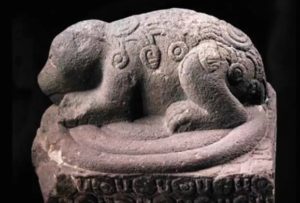 “It is a beast no bigger than a normal dog, but with a very special characteristic. In its tail, the termination was not normal, it did not end in a tip. It had a claw with which it killed its prey. One day while repairing a small boat the sailors heard the cry of a child. Strangers rushed to help the child because their cries came from the lake because they thought the child was drowning, but to their surprise, they never saw the child. They stepped closer to the shore to distinguish where that weeping came from and to see if they could help that crying child when out of nowhere a claw grabbed the sailor by pulling him from the boat and dragging him to the bottom of the lake. Frightened, his companion hurried to warn that a creature in the lake had killed his friend. They went out to look for the sailor’s body without success. When returning the natives explained to them that it had been the Ahuízotl, that it is a mystical and sacred animal. The sailors said that not even an animal could take a man in such a way that it was the work of the devil. But the disappearances were more and more constant and the men did not dare to go out alone, and less if they heard the cry that sounded like a child.”
“It is a beast no bigger than a normal dog, but with a very special characteristic. In its tail, the termination was not normal, it did not end in a tip. It had a claw with which it killed its prey. One day while repairing a small boat the sailors heard the cry of a child. Strangers rushed to help the child because their cries came from the lake because they thought the child was drowning, but to their surprise, they never saw the child. They stepped closer to the shore to distinguish where that weeping came from and to see if they could help that crying child when out of nowhere a claw grabbed the sailor by pulling him from the boat and dragging him to the bottom of the lake. Frightened, his companion hurried to warn that a creature in the lake had killed his friend. They went out to look for the sailor’s body without success. When returning the natives explained to them that it had been the Ahuízotl, that it is a mystical and sacred animal. The sailors said that not even an animal could take a man in such a way that it was the work of the devil. But the disappearances were more and more constant and the men did not dare to go out alone, and less if they heard the cry that sounded like a child.”
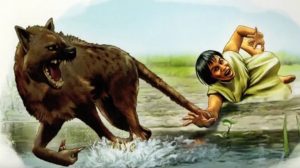 Spanish settlers reported many sightings of the creature which was of no surprise to the Aztecs who had no doubt that the Ahuízotl was real. It was usually described as being about the size of a coyote, with dark eyes and a thick, glistening fur. It had large fangs much like a wolf’s and rounded ears. When it came out of the water and shook itself off, its fur would stand up in parts and thus some people claimed that the creature had a spiked appearance. Some cryptozoologists, or those who seek to examine and describe previously unknown animals, hesitate to believe that the Ahuízotl was real because of its strange tail. The tail is what the animal used to snatch its prey and take it to its underwater lair. Perhaps what people were describing was more of a prehensile tail like that of an opossum or monkey, a sort of third arm to hold onto or to grab things with. The Ahuízotl supposedly moved rapidly, so if it was a real creature perhaps the human-like hand at the end of the tail was an elaboration or misidentification. Its legs were described as more apelike than doglike and sometimes the Ahuízotl would stand on its hind legs. As in the Cortés letter to the king of Spain, the creature was said to cry like a baby to lure humans to the edge of the water or out into the water in a boat. In some reports, it also had the capability to laugh like a human. People on dry land were not completely safe, as the Ahuízotl’s tail was known to whip out of the water and curl around the leg of an unsuspecting human. Unlike the mysterious lake creature called “Nessie” in Scotland’s Loch Ness, the Ahuízotl did not appear to be reptilian or a fish-like, but had more of the characteristics of a medium-sized aquatic mammal. Encounters with the Ahuízotl were never benign; the creature was always described as vicious and prone to anger.
Spanish settlers reported many sightings of the creature which was of no surprise to the Aztecs who had no doubt that the Ahuízotl was real. It was usually described as being about the size of a coyote, with dark eyes and a thick, glistening fur. It had large fangs much like a wolf’s and rounded ears. When it came out of the water and shook itself off, its fur would stand up in parts and thus some people claimed that the creature had a spiked appearance. Some cryptozoologists, or those who seek to examine and describe previously unknown animals, hesitate to believe that the Ahuízotl was real because of its strange tail. The tail is what the animal used to snatch its prey and take it to its underwater lair. Perhaps what people were describing was more of a prehensile tail like that of an opossum or monkey, a sort of third arm to hold onto or to grab things with. The Ahuízotl supposedly moved rapidly, so if it was a real creature perhaps the human-like hand at the end of the tail was an elaboration or misidentification. Its legs were described as more apelike than doglike and sometimes the Ahuízotl would stand on its hind legs. As in the Cortés letter to the king of Spain, the creature was said to cry like a baby to lure humans to the edge of the water or out into the water in a boat. In some reports, it also had the capability to laugh like a human. People on dry land were not completely safe, as the Ahuízotl’s tail was known to whip out of the water and curl around the leg of an unsuspecting human. Unlike the mysterious lake creature called “Nessie” in Scotland’s Loch Ness, the Ahuízotl did not appear to be reptilian or a fish-like, but had more of the characteristics of a medium-sized aquatic mammal. Encounters with the Ahuízotl were never benign; the creature was always described as vicious and prone to anger.
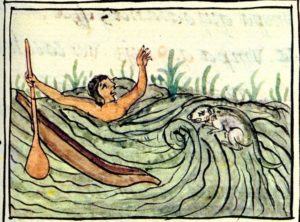 The king of Spain, eager to know about the flora, fauna and people of his new realms, commissioned studies of all the elements of the newly discovered lands, mostly conducted by members of the clergy. One such picture-filled research study is known today as the Florentine Codex, compiled by the Franciscan friar Bernardino de Sahagún between 1545 and 1590, with help from a group of Aztecs who were his former students at the Colegio de Santa Cruz de Tlatelolco. The friar wanted to use Nahua people in the creation of his work in what may be considered one of the earliest examples of cultural sensitivity on the part of Europeans in the Americas. Sahagún wanted to capture the totality of the Aztec world on Aztec terms. The codex is comprised of 2,400 pages in 12 volumes and includes over 2,000 illustrations. In Book XI which explains the “earthly things” in the new Spanish realm, we find an illustration and description of the Ahuízotl. Sahagún writes:
The king of Spain, eager to know about the flora, fauna and people of his new realms, commissioned studies of all the elements of the newly discovered lands, mostly conducted by members of the clergy. One such picture-filled research study is known today as the Florentine Codex, compiled by the Franciscan friar Bernardino de Sahagún between 1545 and 1590, with help from a group of Aztecs who were his former students at the Colegio de Santa Cruz de Tlatelolco. The friar wanted to use Nahua people in the creation of his work in what may be considered one of the earliest examples of cultural sensitivity on the part of Europeans in the Americas. Sahagún wanted to capture the totality of the Aztec world on Aztec terms. The codex is comprised of 2,400 pages in 12 volumes and includes over 2,000 illustrations. In Book XI which explains the “earthly things” in the new Spanish realm, we find an illustration and description of the Ahuízotl. Sahagún writes:
“It is very much like the small teui dog; small and smooth, shiny. It has small, pointed ears, just like a small dog. It is black, like rubber; smooth, slippery, very smooth, long-tailed. Its tail is provided with a hand at the end; just like a human hand is the point of its tail. Its hands are like a raccoon’s hands or like a monkey’s hands. It lives, it is a dweller in watery caverns, in watery depths, and if anyone arrives there at its entrance, or there in the water where it is, it then grabs him there. It is said that it sinks him, it plunges him into the water; it carries him to its home, it introduces him to the depths; so its tail goes holding him, so it goes seizing him. The one it has drowned no longer has his eyes, his teeth, and his nails; it has taken them all from him, but his body is completely unblemished, his skin uninjured. Only his body comes out all slippery-wet; as if one had pounded it with a stone; as if it had inflicted small bruises. When it was annoyed – had caught no one, had drowned none of us commoners – then was heard as if a small child wept. And he who heard it thought perhaps a child wept, perhaps a baby, perhaps an abandoned one. Moved by this, he went there to look for it. So there he fell into the hands of the Ahuízotl, there it drowned him.”
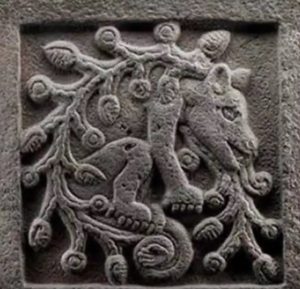 According to Aztec beliefs, the unfortunate victims of the Ahuízotl were rewarded in the afterlife. They got to spend their eternity in Tlalocan, a paradise ruled over by the rain god Tlaloc, his wife Chalchiuhtlicue, and their attendants called the Tlaloque. In fact, an attack by an Ahuízotl was such a rare thing and so connected to the spiritual world of the Aztecs that only a priest of Tlaloc could touch the victim’s body after death. No one but the priest could even fish the body out of the water. Because of the rarity of an attack some Aztecs believed that the victims were chosen for having special characteristics while alive or for living a noble or virtuous life.
According to Aztec beliefs, the unfortunate victims of the Ahuízotl were rewarded in the afterlife. They got to spend their eternity in Tlalocan, a paradise ruled over by the rain god Tlaloc, his wife Chalchiuhtlicue, and their attendants called the Tlaloque. In fact, an attack by an Ahuízotl was such a rare thing and so connected to the spiritual world of the Aztecs that only a priest of Tlaloc could touch the victim’s body after death. No one but the priest could even fish the body out of the water. Because of the rarity of an attack some Aztecs believed that the victims were chosen for having special characteristics while alive or for living a noble or virtuous life.
We are still left wondering whether or not the Ahuízotl was a real animal previously unknown or an animal well-known but mistaken for something else. With the growth of Mexico City under Spanish colonial rule, the city expanded beyond the original Aztec capital on an island in the middle of Lake Texcoco. The city was subjected to constant flooding in its early years. The years the biggest floods happened were 1555, 1580, 1604 and 1607. In the 1620s much of the city had standing water in it for years, which caused the Spanish authorities to consider either abandoning the capital to move to higher ground or just drain Lake Texcoco and divert future floodwaters elsewhere. They opted for the latter. As a result of the disappearance of the lake, some people believe, the Ahuízotl, whatever it was, simply lost its habitat and became extinct.
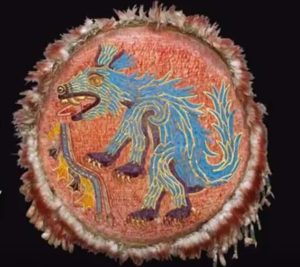 Some modern-day researchers are searching for more practical explanations for the creature. Was it a holdover from the megafauna days of the last Ice Age? Was it a mutation of a known animal, or was the whole legend of the Ahuízotl just an embellishment of an existing animal still found in central Mexico? Dr. Matthew McDavitt, an American ethnozoologist has written on the Ahuízotl and has come to some conclusions on what the creature could have been. He notes similarities among the early Spanish eyewitness accounts of the creature and written stories of Aztec lore. In his article, “Water-Dog Detective,” McDavitt makes a list of characteristics found in most of the Ahuízotl accounts:
Some modern-day researchers are searching for more practical explanations for the creature. Was it a holdover from the megafauna days of the last Ice Age? Was it a mutation of a known animal, or was the whole legend of the Ahuízotl just an embellishment of an existing animal still found in central Mexico? Dr. Matthew McDavitt, an American ethnozoologist has written on the Ahuízotl and has come to some conclusions on what the creature could have been. He notes similarities among the early Spanish eyewitness accounts of the creature and written stories of Aztec lore. In his article, “Water-Dog Detective,” McDavitt makes a list of characteristics found in most of the Ahuízotl accounts:
“(1) the size of a small dog, (2) with small, rounded ears, (3) colored black and brown or grey, (4) that lives in rivers of the hot lands in southern Mexico, and which (5) has a prehensile tail.”
McDavitt has narrowed down the options to two animals currently found in the warm and tropical areas of Mexico: The southern river otter and the water opossum. He is inclined to believe that the creature was probably an exaggerated form of the water opossum because of the prehensile tail, and he is not the first to propose this. Quintessential Mayanist J. Eric Thompson speculated that the water opossum was the stand-in for the Ahuízotl decades ago. There are many things that remain unexplained 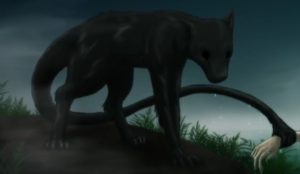 if we are to accept this opossum theory. Water opossums are not particularly aggressive and are not known to drown humans. Of course, there is that problem already mentioned regarding the tail with the human hand at the end. If the creature was something altogether different, we are left with the same unanswered questions that exist with other legendary creatures, such as Bigfoot or the Loch Ness Monster. Where is the physical evidence? Why don’t examples of bone or fur exist, or even a carcass? Perhaps part myth, part cautionary tale and part real, the Ahuízotl remains an interesting aspect of the world of the ancient Aztecs.
if we are to accept this opossum theory. Water opossums are not particularly aggressive and are not known to drown humans. Of course, there is that problem already mentioned regarding the tail with the human hand at the end. If the creature was something altogether different, we are left with the same unanswered questions that exist with other legendary creatures, such as Bigfoot or the Loch Ness Monster. Where is the physical evidence? Why don’t examples of bone or fur exist, or even a carcass? Perhaps part myth, part cautionary tale and part real, the Ahuízotl remains an interesting aspect of the world of the ancient Aztecs.
REFERENCES (This is not a formal bibliography)
Bowles, David. Mexican Bestiary. Donna, TX: VAO Publishing, 2012. Buy the book on Amazon here: https://amzn.to/2KW2rBj
“Water-Dog Detective,” article on Mexicolore web site.
